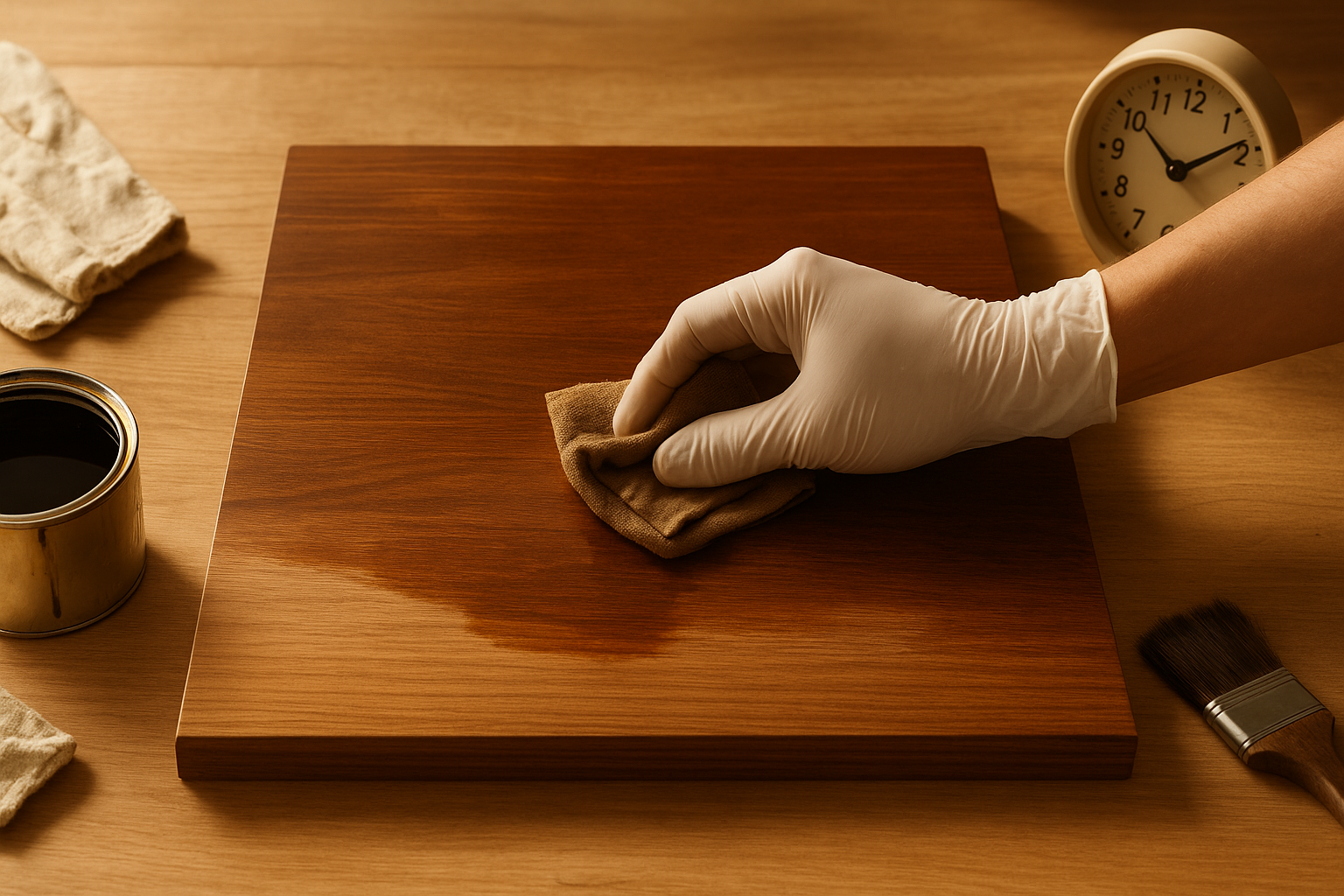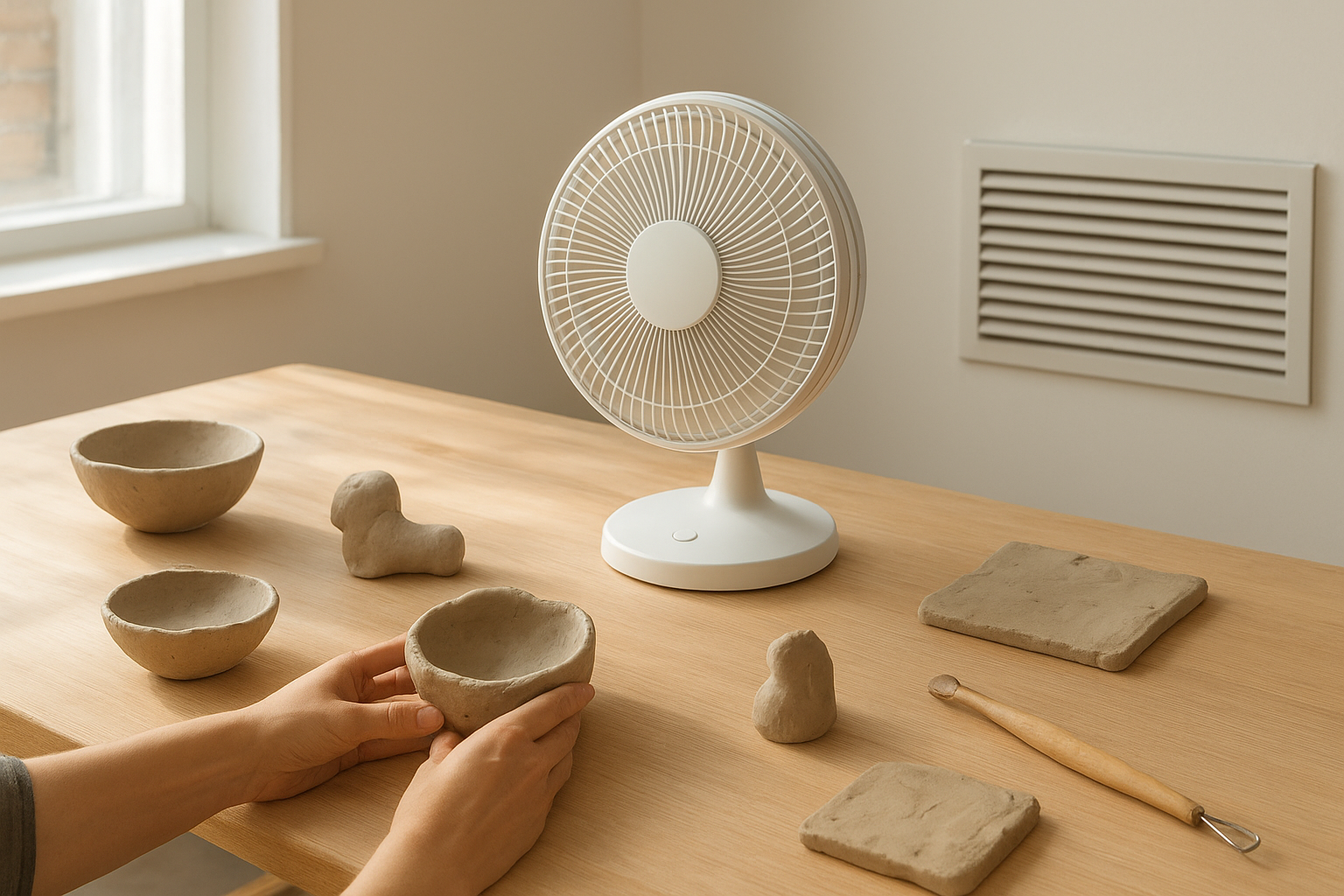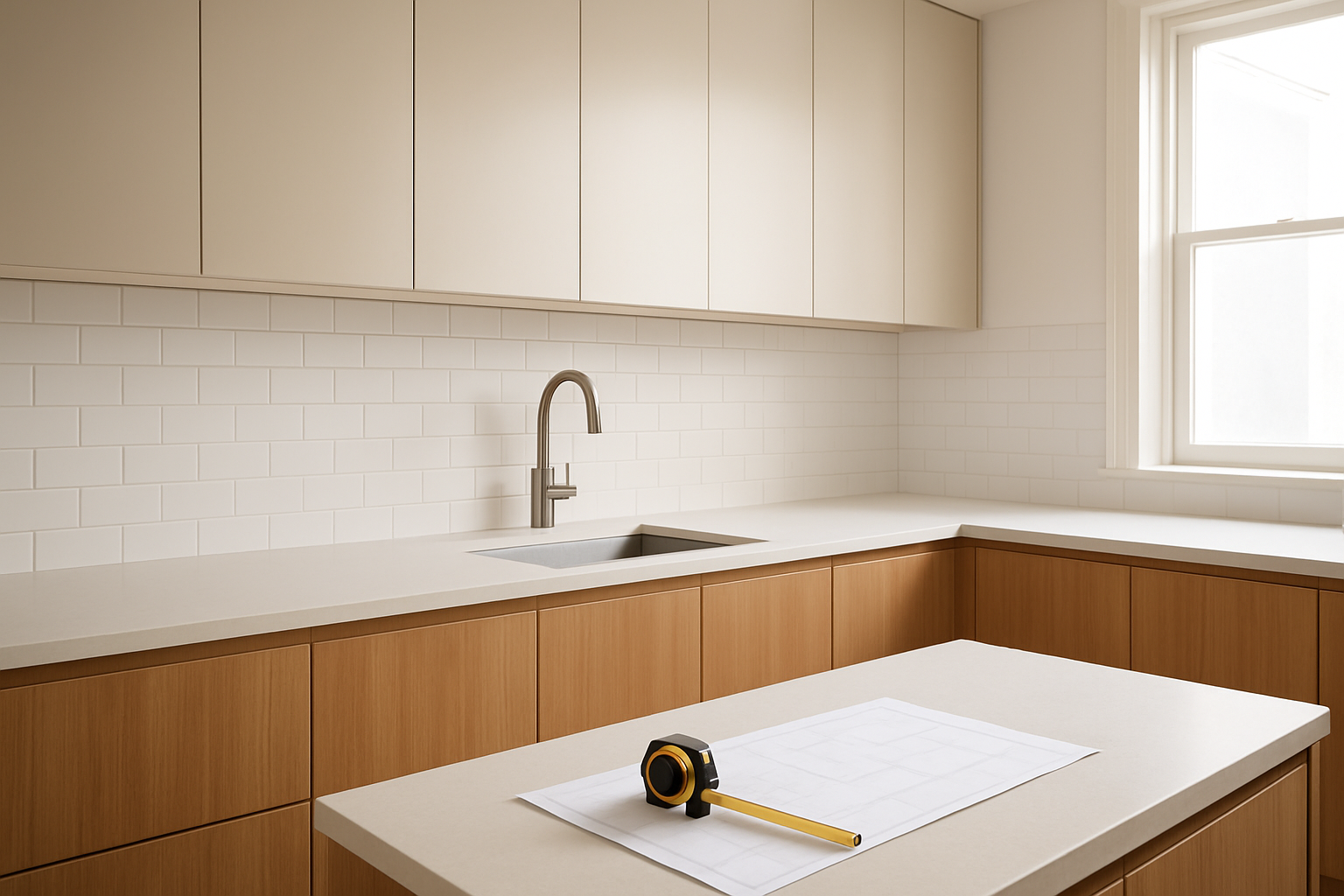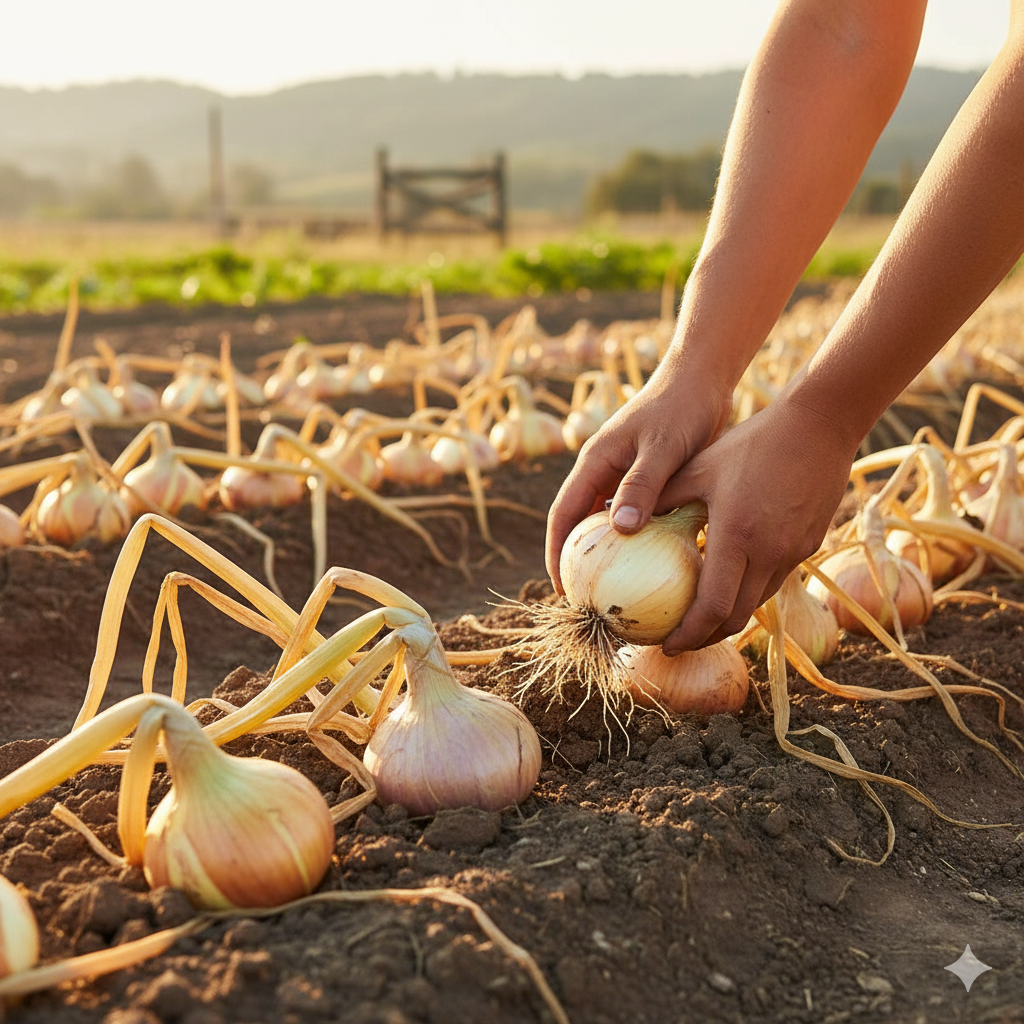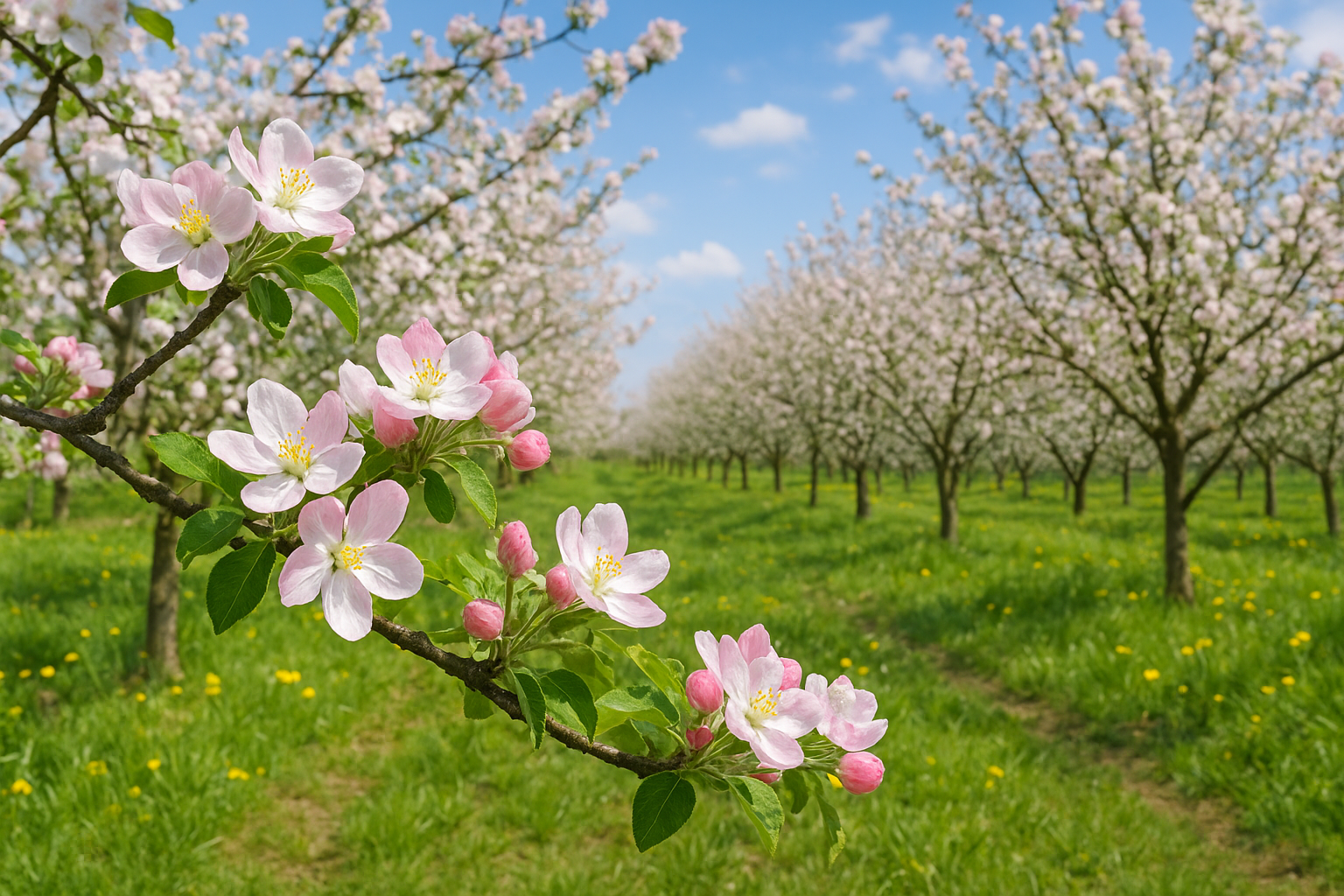There’s nothing like the moment you pull up a homegrown onion — the earthy smell, the papery crackle, and the sense that you just nailed another gardening milestone. But if you’re staring at those green tops and thinking, “Hmm… when exactly should I harvest these?” — you’re not alone. Timing onion harvests can be surprisingly tricky, yet it makes all the difference between crisp, flavorful bulbs and soggy disappointments.
Let’s break down how to spot the signs your onions are ready, how to pull them properly, and how to cure and store them like a pro.
🌿 How to Tell When Onions Are Ready to Harvest
Onions are ready to harvest when their green tops start turning yellow and naturally fall over. The bulbs should feel firm, with papery skin visible above the soil. This usually happens 100–120 days after planting, depending on your onion variety and growing conditions.
Now let’s dive into what that really means.
👀 Visible Signs That Your Onions Are Mature
Your onions are giving you clues — you just have to read them right. Here’s what to look for:
- Tops begin to bend or wilt naturally. This isn’t your onion “dying.” It’s a clear sign it’s done growing underground.
- Outer layers look papery and dry. If the skins are tightening up, the bulbs are curing themselves while still in the ground.
- Bulbs push above the soil line. Mature onions tend to show their shoulders — a sure sign they’re plump and ready.
- The neck softens. Gently pinch where the leaves meet the bulb. If it feels soft instead of stiff, you’re nearing harvest time.
When several of these signs appear together, it’s harvest season.
🧅 When to Harvest Onions Based on Type
Not all onions mature at the same pace. The timing depends on what you planted:
- Green Onions (Scallions): Harvest early, around 50–70 days, before bulbs form.
- Storage Onions (Yellow, White, Red): Usually take 90–120 days. Wait until tops fall over and skins look dry.
- Sweet Onions: Tend to mature earlier (about 85–100 days). Don’t over-wait — their higher water content makes them spoil faster.
If you’re unsure of your variety, use visual cues — falling tops and dry skin rarely lie.
🧤 How to Harvest Onions Without Damaging Them
Once you’re confident they’re ready, here’s how to harvest your onions safely:
- Stop watering a week before harvest. This helps the skins toughen up.
- Choose a dry day. Moisture can lead to rot during curing.
- Loosen the soil gently with a garden fork or trowel. Don’t stab too close — those bulbs bruise easily.
- Pull from the base, not the greens. Tugging the leaves can tear them away.
- Shake off excess dirt but don’t wash. Soil protects them until curing.
Lay your onions on the ground to dry in the sun for a few hours — but not too long. Overexposure can sunburn the bulbs.
🌞 Curing and Storing Your Onions After Harvest
Curing is the make-or-break step that turns your onions from fresh to shelf-ready.
To cure onions properly:
- Spread them out in a dry, ventilated area — like a garage, shed, or porch — for 10 to 14 days.
- Make sure the bulbs aren’t touching each other. Airflow matters.
- When the outer skins are fully papery and the necks completely dry, they’re cured.
After that:
- Trim off the roots and cut the stems about an inch above the bulb.
- Store in mesh bags, crates, or braided bunches in a cool, dark, and dry space (ideally 32–40°F).
With proper curing and storage, your onions can last up to 6–8 months.
🚫 Common Mistakes Gardeners Make When Picking Onions
Even seasoned gardeners get tripped up by these:
- Pulling too early: You’ll get small bulbs that don’t store well.
- Waiting too long: Overripe onions may split, sprout, or rot in the ground.
- Skipping curing: Fresh-picked onions that aren’t dried properly can mold in storage.
- Washing before curing: Water encourages rot — always brush, never rinse.
Remember, onions are resilient — a little patience pays off with perfect flavor and texture.
💬 Quick FAQ
🧄 When should I pick onions after the tops fall?
Wait about 5–7 days after the tops collapse naturally. This lets the skins tighten up for longer storage.
🌱 Can I eat onions that haven’t fully matured?
Absolutely! They’re called green onions and have a milder, sweeter taste. Just use them quickly — they won’t keep long.
🌻 Do onions keep growing if I don’t harvest them?
Eventually, they’ll bolt (produce flowers) or rot underground. Harvesting at the right time ensures you get peak flavor and texture.
🌾 Final Thoughts
Knowing when to harvest onions isn’t about exact days on a calendar — it’s about learning to read the plant’s rhythm. When the greens flop, the necks soften, and the skins dry, your onions are sending you a message: “We’re ready!”
If you’re into gardening aesthetics, you might also love exploring large terracotta pots that give your plants (and onions!) a chic rustic home. And just like in home design — where structure defines beauty — timing and observation define success in the garden. For instance, our guide on different types of ceilings shows how even subtle details shape big results — much like harvesting at just the right moment.





